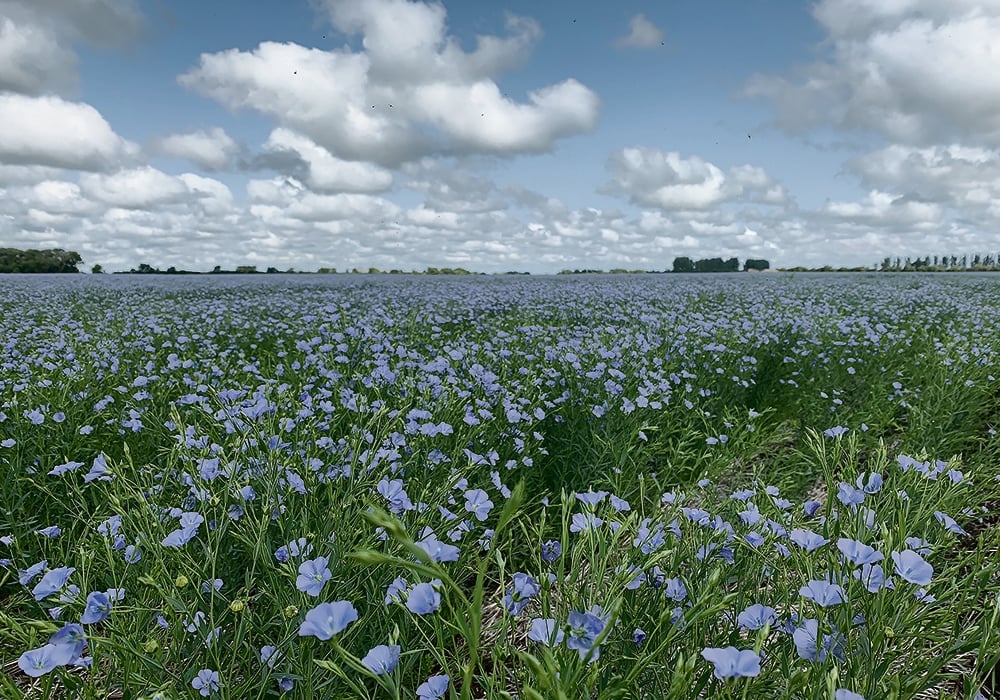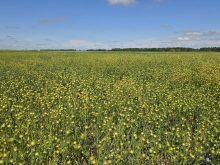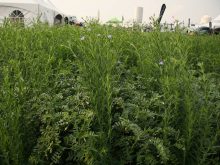SASKATOON — Canadian farmers produced more flax than initially anticipated this year, says a trader of the crop.
Statistics Canada estimates growers planted 503,200 acres of the oilseed, the smallest crop since 1949.
Related stories:
- Black Sea region expected to produce more flax
- Saskatchewan company to buy flax straw in Gilbert Plains area
It is forecasting an average yield of 21.5 bushels per acre, which is very close to Saskatchewan Agriculture’s forecast of 22 bu. per acre for that province.
Read Also

Fertilizer method’s link to emissions studied
A researcher says others studying greenhouse gas emissions aren’t considering how the loss of nitrogen into the atmosphere correlates with fertilizer application or if there is an impact to yield.
Tyson Fehr, procurement and marketing manager with Prairie Premium Products Inc., thinks both of those estimates are too low, at least for the eastern Prairies.
He is hearing yields in the mid-40s north and south of Winnipeg and in Manitoba’s Red River region.
There have also been plenty of yields in the low-to-mid-30s in southwestern Manitoba and southeastern Saskatchewan.
The only places where yields are in the 20s where he is sourcing the crop are farms where canola was a complete write-off.
Agriculture Canada is forecasting 265,000 tonnes of production, the smallest crop since 1967.
Fehr thinks it is going to be bigger than that based on the yields he has seen. The 2024-25 ending stocks-to-use ratio will still be snug but not as tight as previously anticipated.
And crop quality is “phenomenal” this year.
Flax prices have been slowly climbing, but there is a wide gap between the high and low bids.
As well, the spread between yellow and brown flax has been shrinking. Today’s premium for yellow is about $3 to $4 per bushel, which is about half of normal.
“I think a lot of that is due to Russia,” said Fehr.
“We’re hearing some very, very cheap yellow numbers coming out of Russia.”
He expects Canadian farmers are going to start planting more brown flax and less yellow flax in the coming years.
“The demand for yellow in general is falling,” he said.
Customers are switching to brown because of the lower price. As well, there are also benefits to growers.
“Brown flax movement is so much more liquid,” he said.
Rayglen Commodities Inc. reports that flax bids were in the $16.50 to $17.00 per bu. range as of Oct. 16 for those seeking delivery before the new year.
“Slightly stronger pricing may be attainable for those willing to hold product into the first quarter of 2025,” the broker said in a recent market commentary.
The company said growers in southeastern Saskatchewan could get as much as $18 if they’re willing to hold product for February-March shipping.
Rayglen said there is potential for improved Canadian export activity in 2024-25, which could offer some price support later in the year.
However, there is also going to be stiff competition from the Black Sea region.
APK-Inform is reporting that Russia will harvest about 1.6 million tonnes of the oilseed, which is close to the record crop of two years ago.
Sergey Pluzhnikov, head of sales for Temporia Capital Company and founder of Russian Pulses Analytics, does not agree with that assessment.
He said plantings in Russia were up compared to last year at about 3.95 million acres, but the growing conditions were “significantly worse,” especially in Siberia.
“At first it was drier weather than usual, and this affected the yield potential, then it rained during the harvest and affected both quality and yield,” he said in a text message.
He estimates farmers produced about 1.3 million tonnes of the oilseed.
“Therefore, the harvest will be sufficient, but this is not a record (like) 2022 with its 2.1 million hectares (4.2 million acres) of land and 1.7 million tonnes of crop,” said Pluzhnikov.
APK-Inform is forecasting 547,500 tonnes of production in Kazakhstan, a 72 per cent increase over last year’s dismal crop of 318,300 tonnes.
Kazakhstan has not been as much of a force as it usually is in export markets due to last year’s poor harvest.
UkrAgroConsult reports that the country’s exports for the first half of 2024 amounted to US$83.3 million, a 42 per cent reduction from the same period one year ago.
Fehr said there is also some competition closer to home. North Dakota is taking some U.S. demand away from Canadian flax with elevator bids that are significantly lower than what they are in Canada.
Canada is picking up some flax business in the European Union at the expense of Russia, which is now facing punitive duties into that market.
“That volume that we’re gaining in the EU seems to be eroding from China,” he said.
Pluzhnikov has spoken to Russian traders based in European countries who have indicated that the EU’s 10 per cent import duty will not critically affect trade volumes.
“Europe needs our flax, so it will get there — either directly with duties or through intermediaries or as processed products,” he said.
“Russian flax has always satisfied the requirements of customers both in terms of quality and price, so we feel confident in both western and eastern markets.”
Contact sean.pratt@producer.com
















